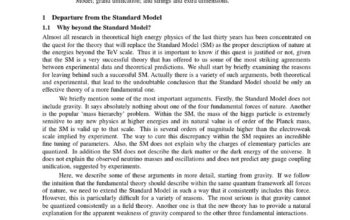The recent astronomical event known as the black hole eclipse has successfully captivated the scientific community and the public alike, primarily due to its implications for our understanding of X-ray sources within the universe. These occurrences, wherein a distant astronomical body is obscured by another, provide unique observational opportunities that yield unprecedented insights into the characteristics and behavior of black holes, their accretion disks, and the surrounding astrophysical environment. This phenomenon raises an intriguing question: How might an eclipse of a black hole contribute to a more nuanced comprehension of the size and nature of X-ray emitting regions in active galactic nuclei (AGN)?
To address this question, it is imperative first to establish a foundational understanding of black holes and their role as powerhouses of X-ray emissions. Black holes, regions of spacetime exhibiting gravitational forces so intense that nothing, not even light, can escape from them, possess a complex structure. At the core of a black hole lies the singularity, where gravitational forces and densities become infinite, and the laws of physics as we understand them begin to devolve into chaos. Surrounding this singularity is the event horizon, the boundary beyond which no information can escape.
In the vicinity of black holes exist accretion disks—structures composed of gas, dust, and stellar debris that swirl around the event horizon, gradually being pulled in by the black hole’s intense gravitational pull. As this matter spirals inward, it heats up to extreme temperatures, leading to the emission of X-rays. These X-ray emissions serve as vital indicators for astronomers seeking to discern the properties of black holes and their environments.
The black hole eclipse serves as a natural experiment. During such an event, the intense radiation emitted from the accretion disk can be temporarily obscured, allowing scientists to study the changes in the X-ray emissions as the blocking object repositions itself. Observations of these eclipses can provide critical data regarding the size and structure of the accretion disks. Herein lies the pivotal challenge: determining the exact properties of the X-ray source during the eclipse. What aspects of the emitting regions can be reliably inferred from this observational data?
To decode the complexities surrounding X-ray emissions during black hole eclipses, one must consider several factors. The geometry of the accretion disk significantly influences the emitted X-ray spectrum. For instance, if the disk is geometrically thin, it will produce a different X-ray profile compared to a thicker, more optically active disk. Moreover, the inclination angle at which the eclipse occurs relative to the observer’s line of sight may skew the perceived intensity of X-ray emissions, further complicating interpretations.
The temporal dynamics of the eclipse are equally critical. The duration of the obscuration can provide insights into the size of the emitting region. A shorter eclipse might suggest that the X-ray emitting region is compact, whereas a longer eclipse could indicate a more expansive area from which X-rays are radiated. This raises a pertinent question: Are we prepared to reassess the conventional models of accretion disks based on such eclipses? Scientific inquiry thrives on paradigm shifts, and such events could challenge long-standing beliefs about the dimensional characteristics of black hole environments.
Contemporary advancements in observational technology have enhanced our capacity to detect and analyze these eclipses. Instruments equipped with high-resolution spectroscopy enable astronomers to distinguish subtle spectral lines within the X-ray emissions, allowing for detailed studies of the physical conditions surrounding black holes. This capability is pivotal, as variations in emission lines can indicate fundamental changes in the properties of the emitting gas, thus providing a more comprehensive view of the dynamics at play.
Another compelling aspect of these observations involves the gravitational effects of the black hole itself. The kinematic behavior of the accretion disk can be influenced by the black hole’s spin. A fast-spinning black hole can impart significant frame-dragging effects, altering the trajectories of nearby matter and subsequently impacting the X-ray emissions. This phenomenon serves to complicate our understanding and invites further inquiry: How can we disentangle the influence of black hole spin from the other formative dynamics at play in a black hole system, especially during an eclipse?
Despite these complexities, black hole eclipses undeniably serve as focal points for advancing our understanding of high-energy astrophysics. As observations from various sources, including space-based observatories like the Chandra X-ray Observatory and the upcoming James Webb Space Telescope, continue to accumulate, the potential for refining our theoretical frameworks grows. The interplay between observed phenomena and theoretical models presents opportunities for rigorous testing of existing hypotheses related to black holes and their X-ray sources.
Moreover, the integration of results from multi-wavelength observations offers a holistic perspective on these celestial enigmas. By correlating X-ray data with observations across the electromagnetic spectrum—from radio to optical—researchers can construct a more cohesive understanding of the evolutionary pathways that lead to the formation and maturation of these enigmatic entities.
In conclusion, black hole eclipses represent a confluence of observational brilliance and theoretical inquiry, posing formidable questions about the nature, size, and dynamics of X-ray emitting regions. As astronomers delve deeper into the mysteries posited by these significant events, they stand at the forefront of redefining our cosmic narrative. Understanding these eclipses’ implications will not only enlighten the scientific community regarding black holes but may also illuminate our broader comprehension of the universe and its ceaselessly variable phenomena.












